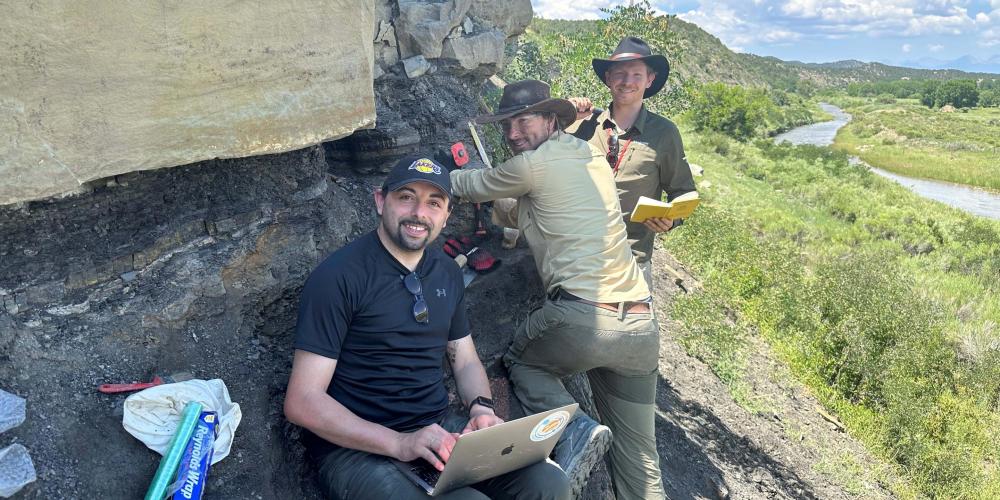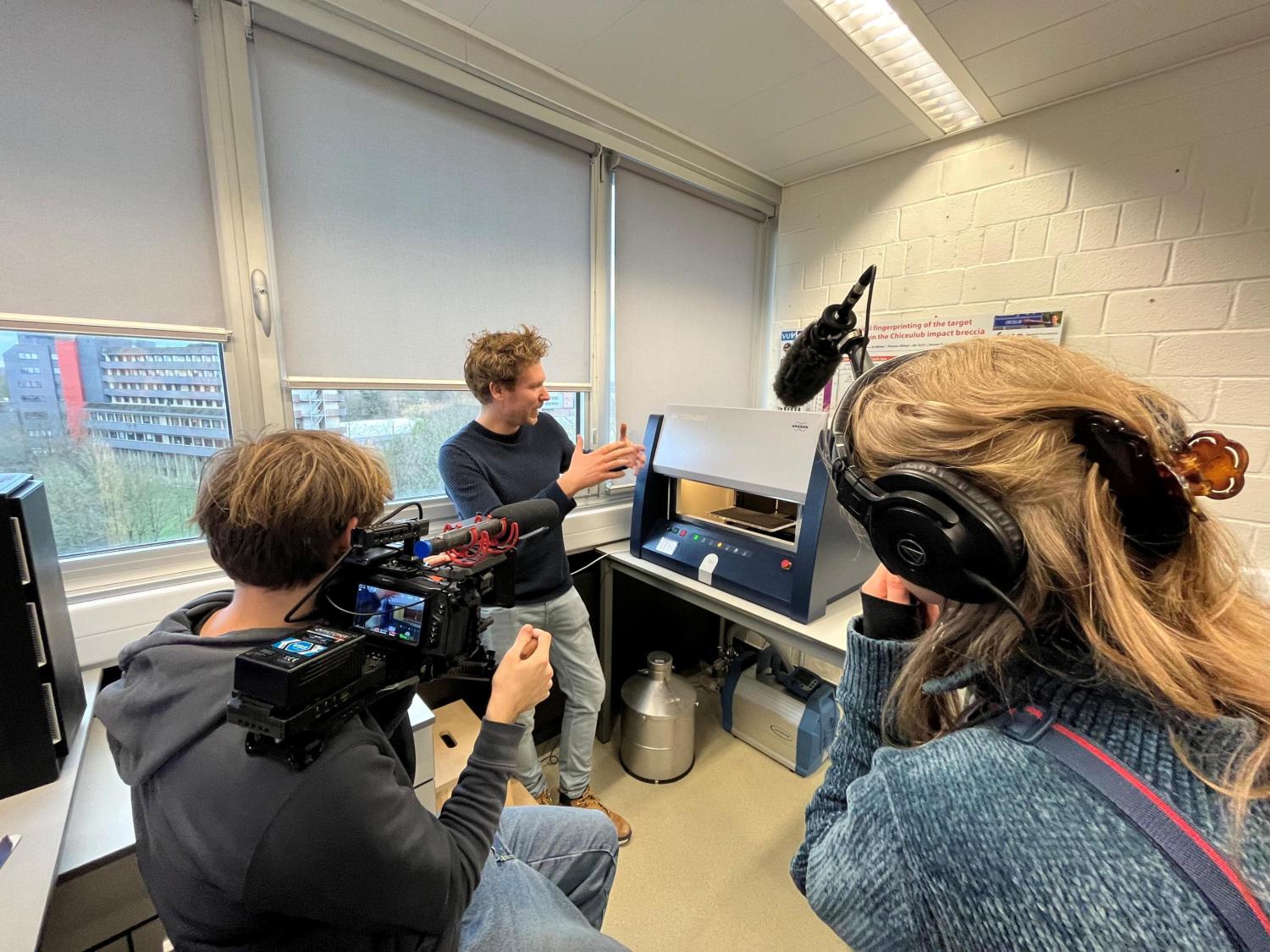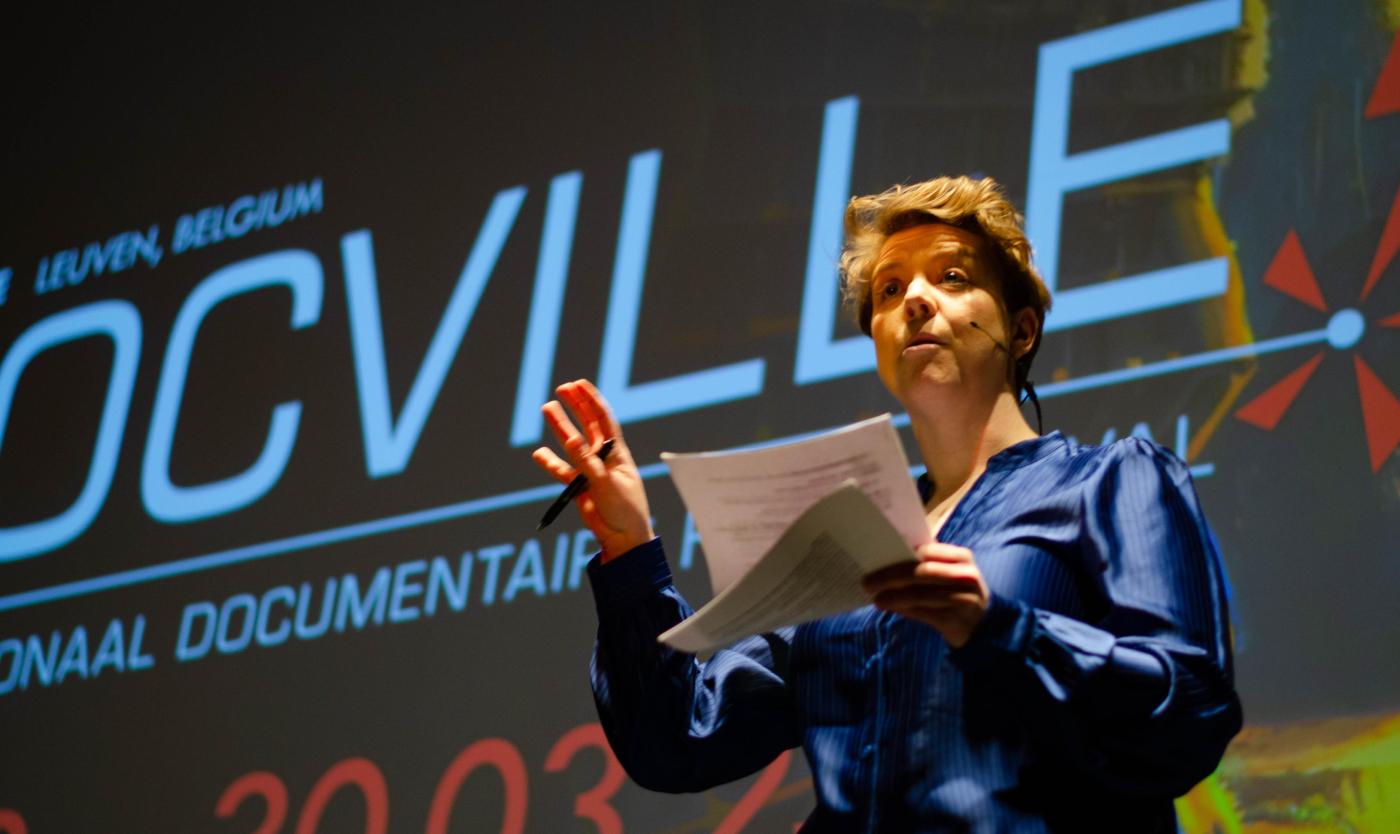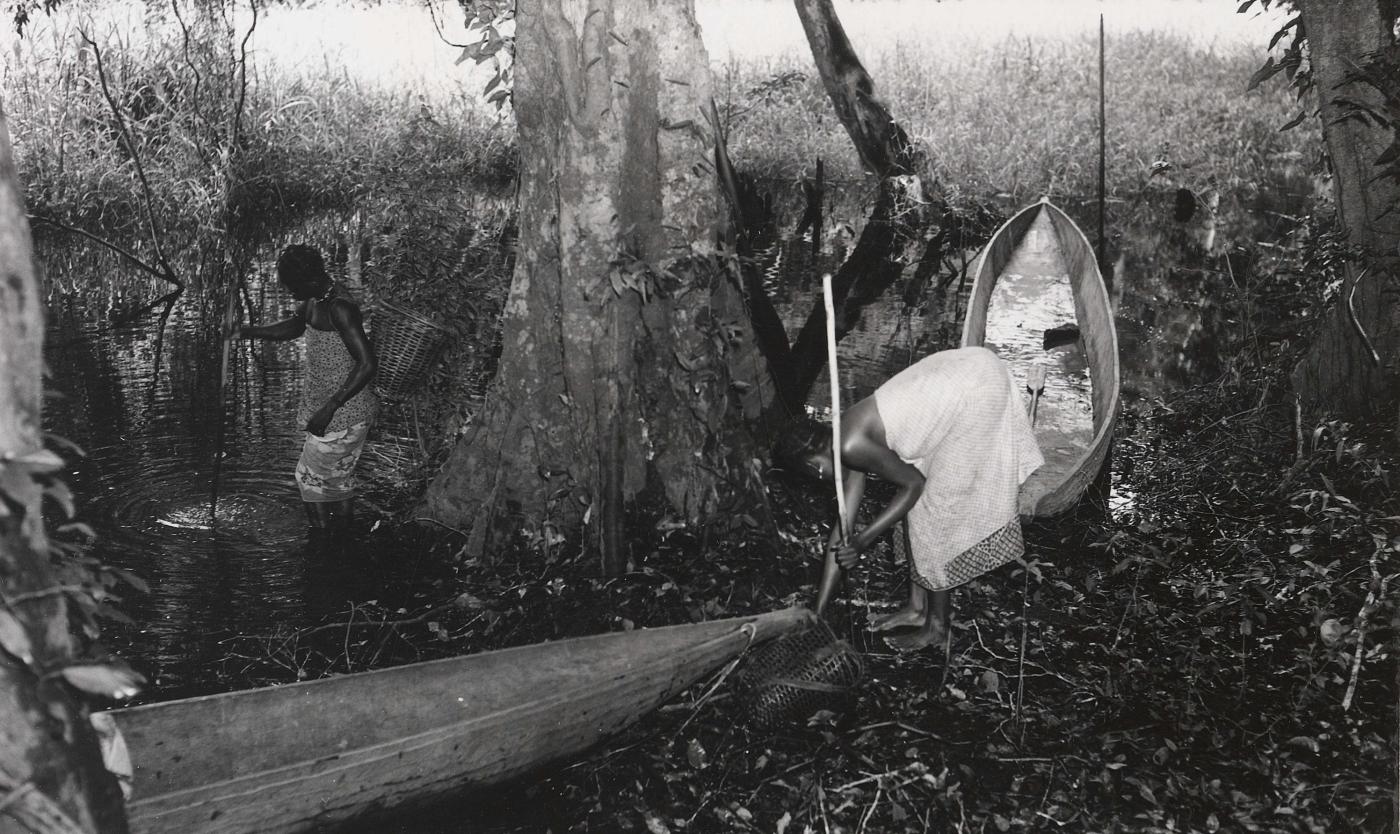
A single slice from a large rocky block found in Colorado reveals to scientists the final days of the dinosaurs, some 66 million years ago. To the untrained eye, it looks like nothing more than lines and dazzling colors. But in the documentary De dag dat zonlicht niet meer scheen (The Day the Sunlight No Longer Shone), geologist Pim Kaskes (VUB) and planetary scientist Cem Berk Şenel (Royal Observatory of Belgium and VUB) explain how they reached their conclusions. Both are members of the research unit Archaeology, Environmental Changes, and Geo-Chemistry (AMGC). They were part of the team that recently uncovered how fine dust from the asteroid impact played a deadly role in the extinction of non-avian dinosaurs. “What the filmmakers wanted to capture was not just the final results, but the entire process – how we ask questions, collect samples, and interpret data – and that was very enriching.”
The documentary poses the question where does this eternal fascination with dinosaurs come from? What about for you?
Cem Berk Şenel: “For me, it all started with Jurassic Park. As a child, I found that world magical – towering reptiles, an extinct world, the mystery of their downfall... It completely captivated me. Later, during my PhD in Belgium, I got involved with the Chicxulub Impact Project – an interdisciplinary initiative supported by Belspo (the Belgian Federal Science Policy Office – Ed.). That project brought together everything I’m interested in astronomy, geology, and the big questions about life and death on Earth. The deeper I delved, the more fascinated I became by their extinction.”
Pim Kaskes: “My fascination goes back even further. As a kid, I used to play in the garden with plastic dinosaurs. The idea that such ‘monsters’ had really existed fascinated me. When I studied Earth sciences at VU Amsterdam, that fascination was reignited. For my Master’s, I worked on ‘Trix’, the T. rex at Naturalis. I even joined field expeditions to Montana and Wyoming, where we excavated fossils from a herd of Triceratops. That was special – not just unearthing bones, but analyzing the sediment layers in which the skeletons were found. That’s when my focus shifted – from the lives of dinosaurs to their sudden end. That led me to the VUB, where I now study the global effects of the Chicxulub impact.”
"No sun means no plants, no plants means no herbivores - and therefore no carnivores"
What exactly did you discover about the extinction of the dinosaurs?
Pim: “For a long time, there were many competing theories on the mechanisms behind the mass extinction. We knew an asteroid had struck, but was it mainly the release of sulphuric gases, the global wildfires, or the dust blocking the sunlight? We modelled all those factors and concluded that the fine dust – produced by the impact itself and originating mainly from the granitic rocks beneath Mexico – had the greatest effect. Those fine particles remained in the stratosphere for years, effectively blocking sunlight, which triggered a sudden cooling of the climate and brought photosynthesis to a global standstill.”
Cem: “What’s unique about our approach is that we combine fieldwork with computational modelling. In North Dakota, the team found a layer of clay that precisely marks the boundary between the Cretaceous and Paleogene periods – the moment of impact. By analyzing the grain-size properties of that layer in detail, we were able to quantify the duration and scale of the so-called ‘impact winter’ more precisely. The impact-generated dust remained in the atmosphere for around fourteen years. And for the first two years after the impact, hardly any sunlight reached Earth’s surface. No sun means no plants, no plants mean no herbivores – and therefore no carnivores either. A chain reaction on a truly global scale.”
You worked on the documentary with directors Maria and Frederik Stuut. In your view, what’s the difference between scientists and creatives?
Cem: “Science is rational, model-based, deterministic. In my world – atmospheric modelling – everything revolves around numbers and simulations, physics and equations. Art, by contrast, is intuitive, open-ended, and allows for interpretation. At first, I found it challenging to connect with that. The filmmakers didn’t just want to show the results – they wanted to capture the process, the wonder, the collaboration. That was new to me, but also incredibly enriching.”
Pim: “What I appreciated about Maria and Frederik is that they truly immersed themselves in our work. They came out into the field with us, standing in pouring rain with their cameras while we were pickaxing through rock. To them, a geological wall was initially just a grey surface. But when we explained how it tells a story millions of years old, their eyes lit up. And it worked both ways they taught us the value of telling a complex story in a clear and human way – without getting bogged down inside notes or jargon. It was a genuine collaboration.”

Dr Pim Kaskes shows filmmakers the micro-X-ray fluorescence instrument, which analyses impact material from the Chicxulub asteroid at the micrometre level.
Many people think of geologists and paleontologists as Indiana Jones types. Is your work really that adventurous?
Pim: “Honestly? Sometimes, yes. In Colorado, we had to hike for an hour with heavy backpacks, under a blazing sun and with thunderstorms approaching. We only had one day to collect the samples. But that site – a perfectly preserved layer of impact material – was definitely worth it. Places like that are often far from tourist paths. And yes, it does feel a bit like an expedition.”
Cem: “For me, it was my first fieldwork experience ever. As a computational scientist, I’m mostly surrounded by physical and mathematical equations, immersed in a quiet and dimly lit room, where I navigate the complexity of nature with passion. Out in the field, I realized just how difficult it is to collect the ‘simple’ numbers I use in my models. It was eye-opening – and gave me a deep respect for geologists. Since then, I see my work differently. It’s no longer just abstract – I now understand what goes into extracting that one data point for my simulations.”
"By understanding the past, we can better make sense of the present - and hopefully shape a better and more sustainable future"
How difficult is it to secure funding for this kind of fundamental research?
Pim: “Very difficult. I recently submitted a proposal to the FWO, but we’re still waiting to hear back. Even with an interdisciplinary team and a highly relevant topic, there are no guarantees. There are too many good ideas and too few resources. What made our project unique was the multidisciplinary collaboration that started with a somewhat chance meeting between Cem and me – him at the Observatory, me at the VUB. Those kinds of opportunities are rare, and it’s crucial that we can continue to take advantage of them.”
Cem: “Private funding for research like ours is limited in Belgium, to my knowledge. We’re studying events from millions of years ago, so the societal relevance can be harder to communicate. And yet, the lessons from back then are incredibly relevant today – especially in the context of the human-driven sixth mass extinction. Our computational models offer insights into climate sensitivity and global ecological fragility. Thankfully, there are public funding bodies in Belgium like the FWO, FNRS, and BELSPO, which provide crucial support for research projects – with gratitude to the FWO for its continued support of my postdoctoral work.”
You’ve solved an important piece of the puzzle regarding the extinction of the dinosaurs. But which questions remain unanswered?
Cem:“We now have a global picture, but I’m curious about regional differences. What happened in the southern hemisphere, where it was likely autumn at the time of impact? How did that affect species’ chances of survival? We also want to better understand what happened in the longer term – what were the CO₂ and methane emissions after the impact? What were the post-impact climate and recovery effects of those?”
Pim: “I’m especially interested in how quickly life bounced back after the impact dust settled. When did plants start growing again? In some sediments, we find fossil traces of ferns – pioneer plants. If we can pinpoint that timeline and compare it with Cem’s model, we can better understand ecosystems’ capacity for recovery. And that’s crucial – even today. We’re likely living through another mass extinction event. By learning from the past, we can better understand the present – and hopefully shape a better and more sustainable future.”

